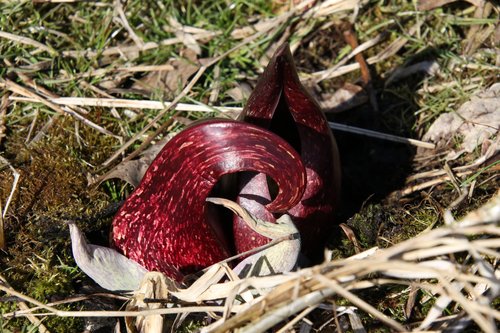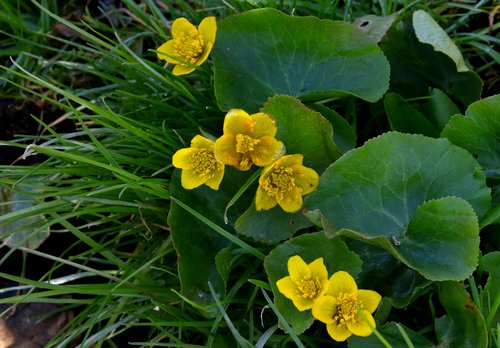A pair of Blanding’s turtles took advantage of a clear day to dry their carapaces (upper shell) by pulling from the water and muck. Their long necks and bright yellow chins, and beyond, are enough of a character to identify this shallow, marshy habitat reptile.
Not cuddly animals, but endearing with their beautifully patterned and shaped shells, are usually approachable, unless it’s a snapper, which is considered the only one of the eleven Wisconsin species who have an aggressive behavior.
Each ecosystem and habitat has its own set of plants, animals, and fungi. Each has its spring favorite, too. Because the conditions are quite different from all else, the entire spring experience in a marsh is a perfect start to spring.
Fields, deciduous forests, pine plantations, and roadside corridors have their own hiking, discovering, photographing, viewing, sometimes puzzling, adventures.

Marshy habitats offer some of the earliest spring finds, too, as snow and ice melt early where a warm spring bubbles past, sometimes plugged with watercress and duckweed plants.
The footing can be uneven. Stepping off solid ground can become a version of quicksand-like material. A slip and boots and beyond will smell of decomposition for days to come. That, too, may be a new experience, smelling what others are living in day to day.
Kenny Salwey, an outdoors author and speaker, often talked and wrote of boot sucking mud, which pulled boots from a trapper or hiker’s feet. Surprising, however, Salwey rarely spoke negatively of these experiences while we pictured him struggling.
Earlier still, a marsh “cabbage,” skunk cabbage it’s called, springs forth with the earliest of leaves and flower stalks, the spadix and covering spathe. The spathe is a combination of purple, green, yellow and brown not seen elsewhere, within or out of a mucky marsh.
True to name and enough to clear out the sinuses, the plant’s parts smell of the black and white mammal usually still in a weak state of hibernation. While turkeys, who have little olfactory development, eagerly eat these first shoots of spring, and leave their own foot marks in the snow and then muck.
Skunk cabbage is common enough that breaking a leaf or spadix is not likely to be noticed by the population. After all, the turkeys are usually here and have eaten.
On the brighter side, marsh marigold is in bloom, butter yellow against vivid lime green leaves. Not that it matters, but

Waterfowl, particularly Canada geese, in pairs, scold before flushing, only to return soon after our departure.
Many more plants and animals come alive in the months ahead, so keep the mucky marsh on a list of seasonal visits when you want something a little different for a change to surprise for the senses.
Contact Jerry Davis, a freelance writer, at sivadjam@mhtc.net or 608.924.1112.





